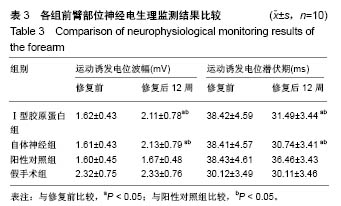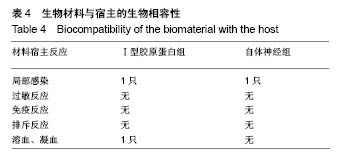| [1] 田野,邱逦.正中神经神经脂肪瘤病超声表现1例[J].中国医学影像技术,2017,33(3):467-467.[2] Donoghoe N, Rosson GD, Dellon AL. Reconstruction of the human median nerve in the forearm with the neurotube. Microsurgery. 2010;27(7):595-600.[3] 崔满意,田恒进,王志勇,等.小指展肌联合小指短屈肌转移重建拇指对掌功能[J].中华手外科杂志,2016,32(4):312-313.[4] Gao KM, Lao J, Guan WJ, et al.Is it necessary to use the entire root as a donor when transferring contralateral C7 nerve to repair median nerve?Neural Regen Res. 2018;13(1): 94-99.[5] 蔡东妙,王庆祥,陈振毅,等.连续股神经阻滞联合硬膜外吗啡镇痛在老年患者全膝关节置换术中的应用[J].临床麻醉学杂志,2016, 32(3):234-236.[6] Huang CT, Chen SH, Lue JH, et al. Neurosteroid allopregnanolone suppresses median nerve injury-induced mechanical hypersensitivity and glial extracellular signal-regulated kinase activation through γ-aminobutyric acid type a receptor modulation in the rat cuneate nucleus. Anesthesiology. 2016;125(6):1202.[7] 徐金东,郁丽娜,赵达强,等.超声引导胸椎旁神经阻滞在胸腔镜交感神经切断术中的应用[J].南方医科大学学报,2016,36(12): 1655-1659.[8] Aseem F, Williams JW, Walker FO, et al. Neuromuscular ultrasound in patients with carpal tunnel syndrome and normal nerve conduction studies. Muscle Nerve. 2017;55(6): 913-915. [9] 张会兰,易兵成,王先流,等.用高度取向石墨烯/聚乳酸(Gr/PLLA)复合超细纤维构建神经导管[J].高等学校化学学报,2016,37(5): 972-982.[10] 贾赛雄,吴迪,利春叶,等.改良尺侧腕伸肌腱联合拇短伸肌腱转位重建拇对掌功能的临床应用[J].中华手外科杂志,2017,33(1): 47-49.[11] 孟维锟,黄仲,谭振,等.血管支架支撑静脉神经导管修复兔周围神经缺损的实验研究[J].四川大学学报(医学版),2017,48(5): 687-692.[12] Flohr-Madsen S, Ytreb㸠LM, Valen K, et al. A randomised placebo-controlled trial examining the effect on hand supination after the addition of a suprascapular nerve block to infraclavicular brachial plexus blockade. Anaesthesia. 2016; 71(8):938-947.[13] 饶建伟,叶舟,占蓓蕾,等.丝胶蛋白对仿生丝素蛋白神经导管的改性研究[J].中华显微外科杂志,2016,39(3):251-257.[14] 王耿焕,沈和平,褚正民,等.神经外科重症监护室重型颅脑损伤患者医院感染的影响因素分析[J].中华神经外科杂志,2016,32(4): 405-408.[15] 赵芹,林栋,刘海梅.冰岛刺参胶原蛋白多肽对PC12细胞氧化损伤的保护作用[J].食品工业科技,2016,37(18):354-358.[16] Greening J, Dilley A. Posture-induced changes in peripheral nerve stiffness measured by ultrasound shear-wave elastography. Muscle Nerve. 2016;55(2):213.[17] 邢冉,陈旭义,朱祥,等.神经干细胞在新型复合支架中的生长和分化[J].中国组织工程研究,2016,20(19):2857-2863.[18] 郭琦,刘灿,海宝,等.壳聚糖导管复合辛伐他汀/泊洛沙姆407水凝胶修复大鼠外周神经缺损的研究[J].中国比较医学杂志,2016, 26(5):1-9.[19] Goedee HS, van der Pol WL, van Asseldonk JH, et al. Diagnostic value of sonography in treatment-naive chronic inflammatory neuropathies. Neurology. 2017;88(2):143.[20] 朱明珍,初红,卢祖能.腕管综合征患者口服及局部注射类固醇疗效的临床和神经超声评估研究[J].国际神经病学神经外科学杂志,2016,43(6):491-496.[21] 刘鐘阳,刘靓,黄景辉,等.复合雪旺细胞的神经组织工程材料联合脉冲电磁场促进大鼠坐骨神经缺损的再生[J].中华骨科杂志, 2016,36(8):465-478.[22] Schreiber S, Dannhardt-Stieger V, Henkel D, et al. Quantifying disease progression in ALS using peripheral nerve sonography. Muscle Nerve. 2016;54(3):391-397.[23] 艾尔肯.热合木吐拉,彭峰,张莉,等.利用激光诱导光化学反应建立大鼠正中神经定量损伤模型[J].中华手外科杂志,2016,32(5): 377-381.[24] Stavros K, Paik D, Motiwala R, et al. Median nerve penetration by a persistent median artery and vein mimicking carpal tunnel syndrome. Muscle Nerve. 2016;53(3):485-487.[25] 赵永青,雷利华,李瑞博,等.神经介入导管室应用精细护理预防医院感染的评价[J].中华医院感染学杂志,2017,27(14): 3343-3345.[26] Choi J, Kim JH, Jang JW, et al.Decellularized sciatic nerve matrix as a biodegradable conduit for peripheral nerve regeneration.Neural Regen Res. 2018;13(10):1796-1803.[27] 方晨,吕圣龙,吴海英,等.电流感觉阈值在评估1型糖尿病患者早期周围神经受损中的价值[J].中国糖尿病杂志,2016,24(4): 339-343.[28] Jiang H, Wu Y, Dang Y, et al. Closed reduction using the percutaneous leverage technique and internal fixation with K-wires to treat angulated radial neck fractures in children-case report. Medicine. 2017;96(1):e5806.[29] 陈军,沈华.神经导管内支架修复周围神经缺损的研究应用与进展[J].中国组织工程研究,2017,21(8):1273-1279.[30] 宋奇翔,叶宸,谭海颂,等.小鼠膀胱内压力与尿道外括约肌肌电图同步测定方法的建立与验证[J].第三军医大学学报,2017,39(2): 179-184.[31] 王双,林斌,陈志达,等.抑制TNFR/RIPK信号通路对大鼠急性脊髓损伤后神经功能的影响[J].中国脊柱脊髓杂志,2017,27(4): 353-360. |
.jpg)






.jpg)